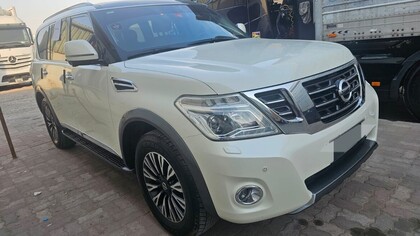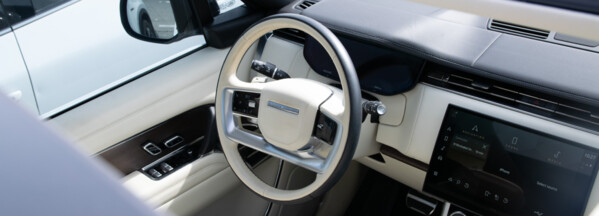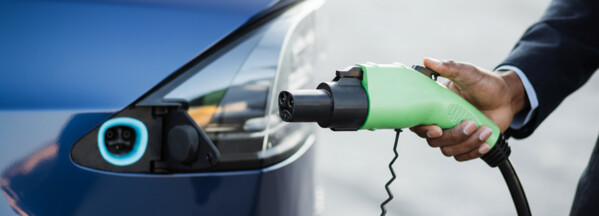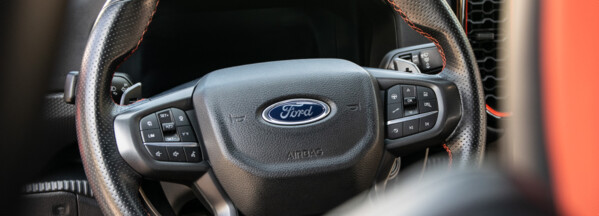Acquiring personal transportation in the United Arab Emirates is not just a convenience, but often a necessity. The dynamic pace of life, large distances between neighborhoods and emirates, as well as climatic features make owning a car the optimal solution for daily commutes. While the public transport system in Dubai is well-developed, it does not always offer the flexibility and comfort that a personal vehicle provides, especially for families with children or individuals working in remote areas. During the summer months, when temperatures reach extreme levels, traveling on public transport with transfers becomes a real challenge.
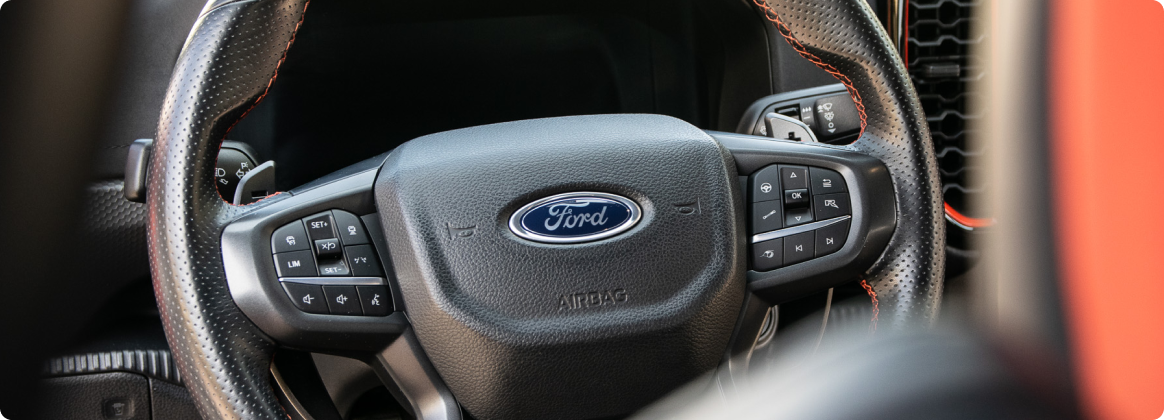
Having a car allows for independent route planning, transporting large purchases, and responding quickly to changes in schedules. Furthermore, car ownership enables quick access to numerous attractions and recreational areas located away from the main tourist routes, making life in the country more fulfilling and interesting. Many picturesque spots in the mountains of Ras Al Khaimah or desert camps in Liwa are simply inaccessible without personal transportation.
However, before starting to use the car, legal formalities must be settled, primarily registration. The vehicle registration procedure in Dubai is clearly regulated and straightforward, provided that one prepares in advance and gathers all necessary documents. We offer a detailed guide for those planning to register a used car in the UAE and become its rightful owner.

Step-by-Step Guide to Registering a Used Car in Dubai
The entire registration process can be divided into several logical stages: preparation, document collection, necessary inspections, and direct contact with government authorities. Each stage has its nuances that are important to consider for a successful completion of the procedure. Sequentially following each point will help avoid delays and additional visits to government offices. The entire procedure is aimed at ensuring road safety and the legal purity of the transaction. For example, mandatory technical inspections reveal hidden technical defects that may pose dangers on the road.
It is important to understand that UAE authorities pay great attention to the technical condition of the country’s vehicle fleet, so the requirements for used cars are quite strict. This strictness works in the buyer's interest by filtering out potentially dangerous or defective vehicles at the inspection stage. Thus, the government protects new owners from acquiring problematic vehicles.
Preparation for Registering a Used Car
The preliminary stage is one of the most significant. The thoroughness with which all information and documentation is gathered will affect the speed and success of the entire procedure. It is recommended to start preparation at least two weeks before the planned purchase date. At this stage, the buyer and seller should agree on all the details of the sale and prepare their personal documents.
It is important to discuss and document in a preliminary agreement who will bear the costs of re-registration and addressing potential issues after the technical inspection. It is also advisable to determine in advance at which RTA center the car will be registered and check its working hours. Some centers operate on extended hours, including evening hours and Fridays, which is convenient for busy individuals.
Before starting to gather documents, a few preliminary steps should be taken:
-
Determine your budget: In addition to the cost of the car itself, you need to budget for insurance, registration fees, and possible minor repairs after the purchase. Keep in mind that the cost of comprehensive insurance for a used car may be 15-20% higher than for a new one.
-
Conduct research: Study the market and compare prices for the models of interest. This will help in negotiating with the seller. Pay special attention to analyzing prices for a specific model based on the year of manufacture and mileage.
-
Find a reliable mechanic: If you are not knowledgeable about the technical aspects, arrange for an independent diagnostic check at a trusted service center. This small investment can save significant amounts in the future. A professional mechanic can identify hidden defects in the suspension, engine, and transmission that are not visible during a superficial inspection.
Additionally, it is recommended to conduct a small legal check on the seller. Ensure that the person offering the car is indeed its legal owner and has no financial encumbrances. A simple verification of data in the Emirates ID and registration certificate (Mulkiya) will take a few minutes but can help avoid involvement in fraudulent schemes.
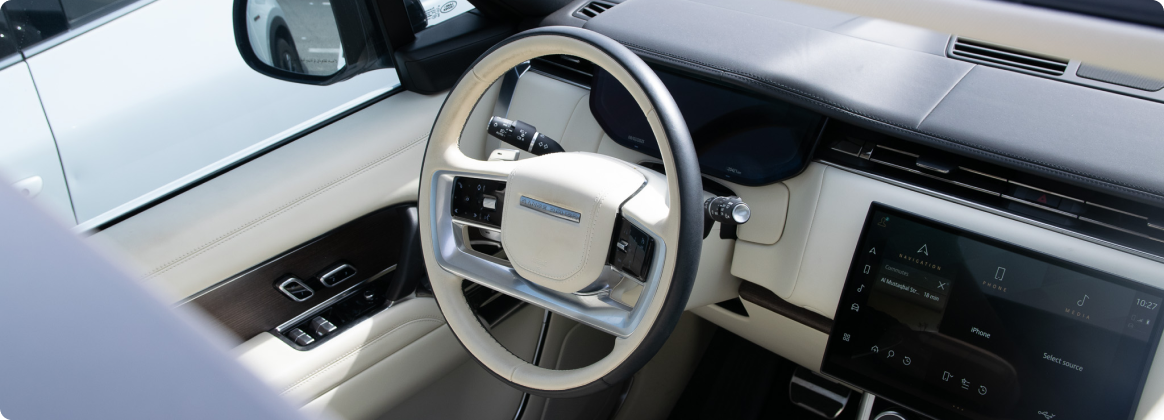
Necessary Documents for Registration
Gathering a complete set of documents is essential for successfully passing all subsequent stages. It is advisable to prepare the original and copies of all required certificates and identification. All copies should be clear and legible, as they will be scanned during registration. It is recommended to prepare two copies of each document – one for RTA and one for your own records. The absence of even one document can lead to a refusal of registration and prolong the entire process.
Owner's Passport and Visa
The main document confirming the identity of a UAE resident is the Emirates ID. A valid passport with a residency visa will also be required. For citizens of GCC countries (Gulf Cooperation Council), a national identity card will be required instead of a residency visa. These documents confirm legal residency status in the country and grant the right to own property, including a vehicle. Without them, it is impossible to start the vehicle registration process in Dubai.
A UAE-issued driver's license is also included in this necessary list. International driving licenses are not accepted for vehicle registration; you must have a local license. It is important that the validity of all documents does not expire soon, as this may raise questions with the registrar. It is recommended to have at least 6 months of validity remaining. If any documents are set to expire within the next three months, it is better to take care of their renewal in advance.
Proof of Residence
In some cases, an RTA employee may request proof of residence in Dubai. This verification is especially likely during the first registration of a vehicle by a new resident. Acceptable proof can be a valid rental agreement (Ejari) or recent utility bills (DEWA) issued in the name of the new vehicle owner. This is done to verify the information provided in the application. Additionally, such a requirement arises if the Emirates ID was issued in another emirate while the vehicle registration takes place in Dubai.
As an alternative, a bank statement indicating the residential address, stamped by the financial institution, can be provided. Having such a document on hand will expedite the process and eliminate the need for a repeat visit. It is advisable to clarify in advance with the chosen RTA center whether proof of address is required in your specific situation.
Documents for the Vehicle
The seller will need to provide the current vehicle registration card (Mulkiya). This document confirms their ownership rights. Before purchasing, be sure to check that all information in the Mulkiya matches the actual characteristics of the vehicle:
-
VIN number;
-
Model;
-
Year of manufacture;
-
Body color.
It is also advisable to have the original invoice for the purchase on hand if it has been retained. For vehicles older than 5 years, having the original invoice is not mandatory, but it serves as additional confirmation of the vehicle's legal origin.
When formalizing the transaction between the parties, a sales agreement is drawn up that records the price and terms of the vehicle transfer. Although a simple written agreement is not a mandatory requirement from the RTA, its presence protects the interests of both parties and can be useful in case of disputes. The agreement should include the vehicle's VIN number, the seller's and buyer's information, the agreed price, and the date of the transaction. It is recommended to prepare two copies of the document – one for each party.

Checking the Vehicle History
Before making a payment, it is advisable to conduct a detailed check of the selected vehicle's history. This is especially relevant for cars imported from other countries, as well as for vehicles with suspiciously low prices. This will help identify potential hidden issues that may affect safety and the future value of the car. The information obtained at this stage provides a complete picture of the vehicle's past. Many serious problems, such as odometer rollback or hidden damages from accidents, cannot be detected during a regular inspection.
How to Check a Vehicle's History in Dubai
There are several ways to check the history:
-
First, you can use the official online services of the RTA and Dubai Police by entering the VIN code or license plate number of the vehicle. On the RTA website, through the "Vehicle Testing" service, you can obtain basic information about the last technical inspection and any outstanding fines. This way, you can find out about any unpaid fines and registered accidents.
-
Second, there are specialized commercial services that provide more detailed reports, including maintenance data and possible odometer rollback. Such companies offer paid services for comprehensive history checks, including data on the number of previous owners and insurance claims.
For imported vehicles (especially from the USA), checking against CarFax or AutoCheck databases is mandatory to avoid purchasing a vehicle with a "salvage" or "flood damage" status. Cars with such markings are often restored and sold at attractive prices, but their operation may be unsafe. The cost of a comprehensive history check usually ranges from 100 to 300 dirhams, but these expenses are well worth it in preventing potential problems.
The Importance of Accident Reports and Service History
An accident report shows whether the vehicle has been involved in serious accidents. Even if the car appears perfect externally, a serious accident may have affected the body geometry or the operation of safety systems. The presence of such incidents in the past may indicate hidden damages to the body or frame that are not visible during a visual inspection. Even well-executed body repairs do not always restore factory geometry, which will affect handling and tire wear in the future. Distorted body geometry can lead to uneven tire wear, alignment issues, and reduced stability.
Service history, on the other hand, confirms that the vehicle has received regular maintenance. This positively impacts its lifespan and reliability. Ideally, a complete service history from an official dealer with records of all scheduled maintenance and fluid changes is preferred. The absence of a service book or significant gaps in maintenance should prompt a more thorough technical diagnosis before purchase. Special attention should be given to records of timing belt and roller replacements, as delays in such work increase the likelihood of costly engine repairs in the future.

Process of Registering a Used Car
Once all the documents are prepared and the vehicle history is checked, you can proceed directly to the registration of the vehicle. It is recommended to plan an entire day for this procedure to complete all stages without rushing. Traditionally, the busiest days at RTA centers are Thursday and Sunday, so to save time, it is better to choose Monday or Tuesday.
The car registration process in Dubai consists of several sequential steps that must be performed in a specific order.
Step-by-Step Guide to Registration
For convenience, the entire procedure is divided into three main stages. Breaks between them are possible; for example, you can arrange insurance in the morning, undergo a technical inspection in the afternoon, and complete the registration in the evening. Each step is mandatory and must be completed before moving on to the next. Following this sequence is the key to a quick and successful registration. If the sequence of steps is violated, the RTA employee will not accept the documents for consideration.
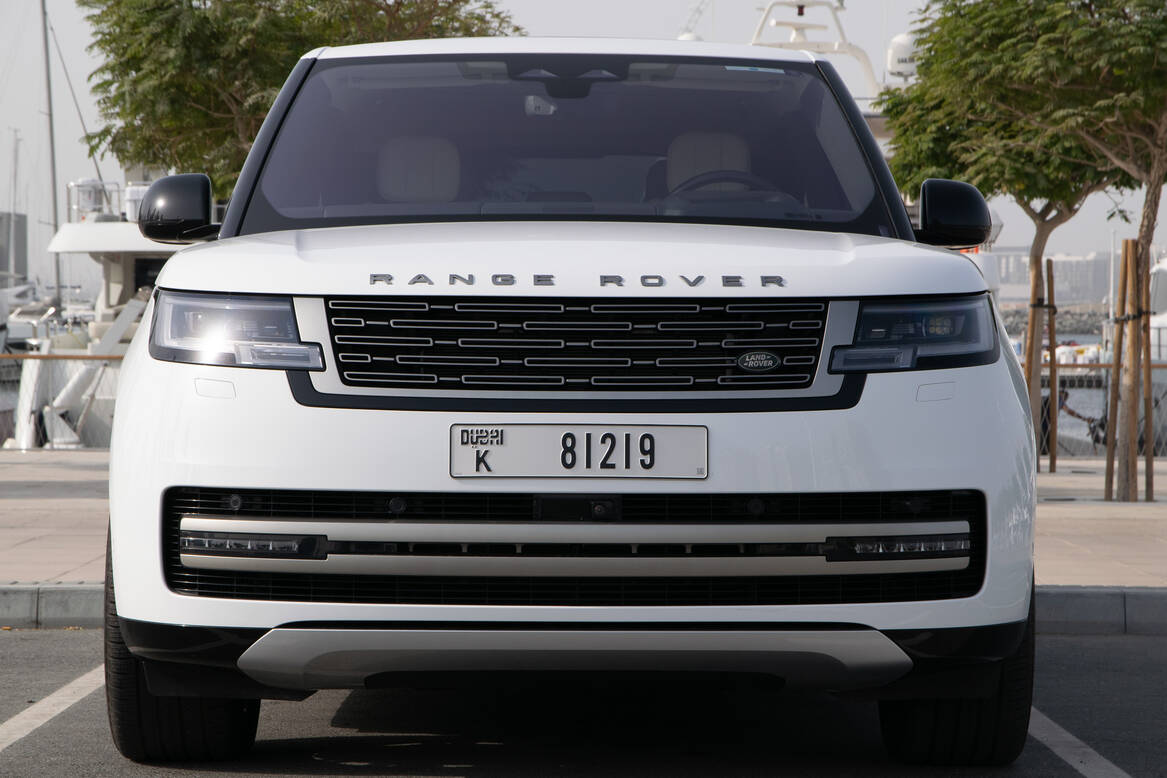
Step 1: Obtaining Insurance
The first thing the new owner needs to do is to arrange an insurance policy in their name. Insurance can be purchased online through insurance company apps or by visiting their offices in person. Without a valid policy, the RTA will not accept the registration documents.
In the UAE, there are two main types of insurance: mandatory (Third-Party) and comprehensive (Comprehensive). Mandatory insurance only covers damage caused to third parties and does not include protection for the insured vehicle itself. For used cars, especially if they are purchased on credit, comprehensive insurance is most often arranged. It is advisable to contact several insurance companies or brokers in advance to compare their offers.
When choosing insurance, it is important to pay attention not only to the price but also to the deductible amount and the availability of additional services, such as roadside assistance or the provision of a replacement vehicle.
The cost of the policy can vary significantly depending on the driver's age, experience, and driving history. The make, model, and market value of the vehicle also affect the price. To save money, you can choose an option with a deductible – this can reduce the cost of the policy by 15-30%.
Step 2: Passing the Technical Inspection
Every used car must undergo a mandatory technical inspection at one of the accredited RTA centers (for example, Tasjeel or Shamil) before re-registration. Before visiting the inspection, it is recommended to conduct a preliminary check: ensure all lights are functioning, check for cracks in the windows, and ensure proper tire pressure. During the technical inspection, specialists check the condition of the braking system, suspension, tires, lighting devices, and emission levels. The integrity of the body and the VIN number are also checked.
Special attention is given to the operation of the air conditioning system, as it is one of the most important systems in vehicles in the hot climate of the UAE. The condition of the tires is also significant; they should not be older than 5 years, regardless of tread wear. The production date of the tires can be found on the sidewall by a four-digit code: the first two digits indicate the week, and the last two indicate the year of manufacture.
If the vehicle does not pass the RTA test on the first attempt, the owner is issued a list of deficiencies that must be corrected within 30 days and return for a re-inspection. Most inspection centers have on-site auto services where minor issues can be quickly resolved.
Upon successful completion, a corresponding certificate is issued, which is valid for 30 days. This document should be kept, as it will be needed for the next registration renewal in a year.
Step 3: Submitting Documents to the RTA (Roads and Transport Authority)
With a complete set of documents (personal documents, insurance, technical inspection certificate), the buyer and seller must appear together at any RTA customer service center. Before the visit, it is advisable to check the working hours of the chosen center, as some of them close for lunch breaks.
At the RTA, they submit an application for the transfer of ownership. An employee checks all the papers, after which the new owner pays the necessary fees. Payment is made only by card; cash is not accepted at RTA centers. After this, the old Mulkiya is canceled, and a new one is printed on-site. The new registration card contains updated owner information and the date of the next technical inspection.
Upon completion of the procedure, a license plate is issued (if the old one is not retained), and a special sticker with the registration expiration date is affixed to the rear window. This sticker must be carefully placed in the upper right corner of the rear window from the inside. This sticker serves as visual confirmation that the vehicle is registered and permitted for operation. Police officers regularly check for valid stickers during road patrols.

Registration Costs and Timeframes
The financial and time costs of registering a car in Dubai are also important aspects of planning a purchase. When considering your budget, keep in mind that the final amount may vary depending on the type of vehicle and the options chosen. Taking these parameters into account will allow for a proper calculation of the final budget. For example, registering an SUV or a vehicle with a large engine typically costs more due to higher insurance costs.
Expected Time for Registration
If all documents are in order and there are no queues, the entire process from passing the technical inspection to receiving the new registration card usually takes between two to four hours. The technical inspection lasts about 30-40 minutes, while the RTA processing takes 20-30 minutes in the absence of a queue.
It is recommended to visit RTA centers on weekdays in the morning to avoid large crowds. The least busy times are from 8:00 AM to 10:00 AM and from 2:00 PM to 4:00 PM. Peak hours usually occur in the evening after work and on weekends (Saturday). Therefore, if you plan your visit in the middle of the week, you can significantly reduce wait times.
For convenience, some centers offer a pre-booking service through the RTA Dubai app, which allows you to reserve a specific time and avoid waiting in line.
How Much Does It Cost to Register a Used Car?
The total cost consists of several payments. An approximate list of fees includes:
-
Technical inspection fee – around 170 dirhams. An additional fee may be charged for re-inspection. After addressing the issues, a new technical inspection usually costs 50-70 dirhams.
-
Transfer of ownership fee – about 350 dirhams. This amount may vary slightly for different types of vehicles. Different rates apply for motorcycles and commercial vehicles.
-
Cost of new license plates (if necessary) – from 35 to 500 dirhams depending on size. Standard long plates cost more than short ones. The seller has the right to keep their license plates; in this case, the buyer will have to pay for the issuance of new ones. Additionally, a personalized number can be ordered, but its cost in the UAE can reach several thousand dirhams.
-
Various administrative fees – around 20 dirhams. These are fixed payments for "Knowledge Fee" and "Innovation Fee." They are charged for the use of modern electronic services and systems.
To the aforementioned fees, the cost of the insurance policy must be added, which ranges from 800 to 3000 dirhams depending on the vehicle and driver experience.
Thus, the total amount of expenses for re-registration, excluding insurance, will be approximately 600-800 dirhams. When purchasing a vehicle on credit, this amount will increase by the fee for removing the encumbrance (around 200 dirhams) and the bank's commission for reissuing the insurance policy.

FAQ
How long does it take to register a car in Dubai?
The process of transferring vehicle ownership at RTA service centers (e.g., Tasjeel or Shamil) is very quick. If all documents are prepared in advance, and the technical inspection and insurance are already arranged, the entire procedure can take from 40 minutes to 1.5 hours. The main time is spent on preparation: obtaining offers from insurance companies, passing the technical inspection, and gathering the necessary papers.
Does a used car in Dubai need to pass a technical inspection before sale?
This is a mandatory condition for the transfer of ownership. Before re-registering the vehicle to a new owner, it must successfully pass a comprehensive technical test at one of the accredited RTA centers. During this check, the condition of the braking system, suspension, tires, exhaust system, and other important components is evaluated. The technical inspection certificate is valid for 30 days.
Is insurance required during the transfer process?
Having a valid insurance policy in the name of the new owner is a strict requirement in the UAE. Without insurance, the RTA system simply will not allow the re-registration process to be completed. Therefore, the buyer must choose an insurance company in advance and arrange a policy that will take effect upon the purchase of the vehicle.
Do the buyer and seller need to be present at the RTA during the transfer of ownership?
According to standard procedure, both the buyer and seller must be present in person at the RTA service center. They must have their original Emirates IDs to confirm their identities. This is done to ensure the security and transparency of the transaction, so both parties confirm their consent to the transfer of rights. In exceptional cases, a power of attorney can be arranged, but this complicates and increases the cost of the process.
How much does it cost to renew vehicle registration in Dubai?
The annual renewal of registration (Mulkiya) consists of several payments. The cost of the technical inspection is about 170 dirhams. The renewal fee is approximately 350-400 dirhams. This amount is supplemented by small administrative fees (around 20 dirhams). The total amount is approximately 550-600 dirhams, excluding the cost of the annual insurance policy.
What is the fine for late renewal of vehicle registration in Dubai?
After the registration expires, the owner is given a grace period of 30 days to renew it. If this period is violated, a monthly fine of about 35 dirhams begins to accrue. However, it is much more serious that driving a vehicle with expired registration is a serious violation and is punished with a large fine (500 dirhams) and the addition of "black" points to the driver's license.
How to check the status of vehicle registration in Dubai?
The validity of vehicle registration and the presence of fines can be checked in several ways. The easiest way is to use the official RTA website or the Dubai Drive mobile app. This information can also be found on the UAE Ministry of Interior (MOI) website. Usually, it is sufficient to enter the vehicle's license plate number or VIN code for verification.
What is Heyaza?
Heyaza is essentially an electronic mark in the RTA system that indicates that the vehicle is under financial encumbrance (e.g., purchased on credit). While the vehicle has Heyaza status, it cannot be sold or re-registered to another person. To remove this restriction, the owner must fully repay the loan, obtain an official letter from the bank confirming no outstanding debt, and submit it to the RTA. This process can take several business days, so it should be started in advance of the planned sale date.


